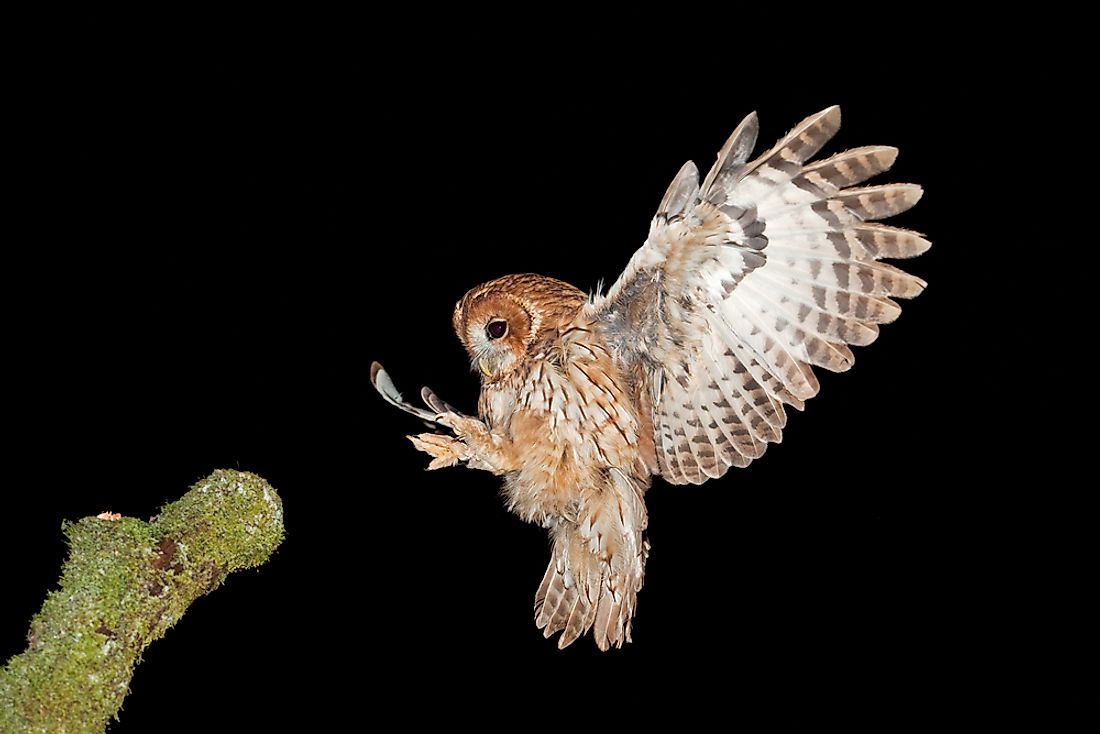Owls In Danger: The Most Threatened Species Of Owls Living Today

Strigiformes is an avian order of nocturnal birds which consists of all species of owls. These birds are predators and prey on other birds, small reptiles, and mammals. The known species of owl in the Strigiformes order number to over 200 species which inhabit every part of the world from the Arctic to the jungles of India. The birds vary in size with the largest being the great gray owl which has a wingspan of 60 inches.
Anatomy Of Owls
The birds of the Strigiformes order have very distinct physical characteristics. The most obvious are their huge eyes. Owls have the biggest eyes of all birds and more than most animals irrespective to their body size. These eyes are critical for their prowess in nocturnal hunting behavior and they can see prey in almost total darkness. The big eyes are fused to their sockets giving the birds perfect binocular vision. However, this also means the birds have to turn their heads to have a side view or see their rear and have developed a flexible neck enabling them to turn their heads more than 180 degrees. Another distinct feature is their almost-round face. The shape is an evolutionary adaptation which enhances their excellent auditory abilities. Various studies have shown that in total darkness owls can identify prey using their hearing and can capture even low-frequency sounds. The owls have large feathers especially on their wings with serrated edges which aid in gliding silently in the dark when hunting.
What Do Owls Eat?
All owl species are predatory, and the majority are nocturnal hunters. Their choice of prey ranges from birds, small reptiles such as lizards and snakes, and small mammals. Some species are excellent fishers and have fish as the primary prey. The owls possess large talons which they use to grasp on prey. They usually swallow the prey whole.
Where Do Owls Live?
Owls are spread all over the world and can be found in the snow areas of Siberia to the savannah plains of Africa. The strigiformes are the exception of birds that build their nests and instead use the nests of other birds to nurse their chicks. They also use caves and crevasses as their nests.
Why Are Owls Threatened?
The owl population has seen a decline over the past decades caused by hunting, lack of prey and habitat, and viral diseases. Several owl species prey on insects have seen numbers drop after consuming insects sprayed with insecticide and is most evident in the burrowing owl. The burrowing owl has also seen its savannah habitat destroyed by humans who find the habitat ideal for large-scale wheat farming. In South East Asia, the owl population has seen a decline caused by poaching, especially in Malaysia.
Can We Save These Birds?
There have been measures put in place by organizations to curb the declining owl population which include banning of owl hunting as well as establishing protective areas on owl habitat areas to prevent the destruction of their habitat. Another measure that has been introduced recently is sensitizing farmers to use owls as pest control instead of the use of pesticides. Owls naturally prey on rodents and other insects which are nuisances to farmers.
Owls In Danger: The Most Threatened Species Of Owls Living Today
| Rank | Common name | Binomial name | Population | Status |
|---|---|---|---|---|
| 1 | Moheli scops owl | Otus moheliensis | 400 | CR |
| 2 | Karthala scops owl | Otus pauliani | 2000 | CR |
| 3 | Pernambuco pygmy owl | Glaucidium mooreorum | 50 | CR |
| 4 | Siau scops owl | Otus siaoensis | 50 | CR |
| 5 | Anjouan scops owl | Otus capnodes | 70 – 400 | CR |
| 6 | Forest owlet | Heteroglaux blewitti | 70 – 400 | CR |
| 7 | Blakiston's fish owl | Ketupa blakistoni | 1500 – 4000 | EN |
| 8 | Biak scops owl | Otus beccarii | 3500 – 15 000 | EN |
| 9 | Congo bay owl | Phodilus prigoginei | 3500 – 15 000 | EN |
| 10 | Sokoke scops owl | Otus ireneae | 3500 – 15 000 | EN |
| 11 | Serendib scops owl | Otus thilohoffmanni | 250 – 999 | EN |
| 12 | Long-whiskered owlet | Xenoglaux loweryi | 350 – 1500 | EN |
| 13 | Taliabu masked owl | Tyto nigrobrunnea | 350 – 1500 | EN |







